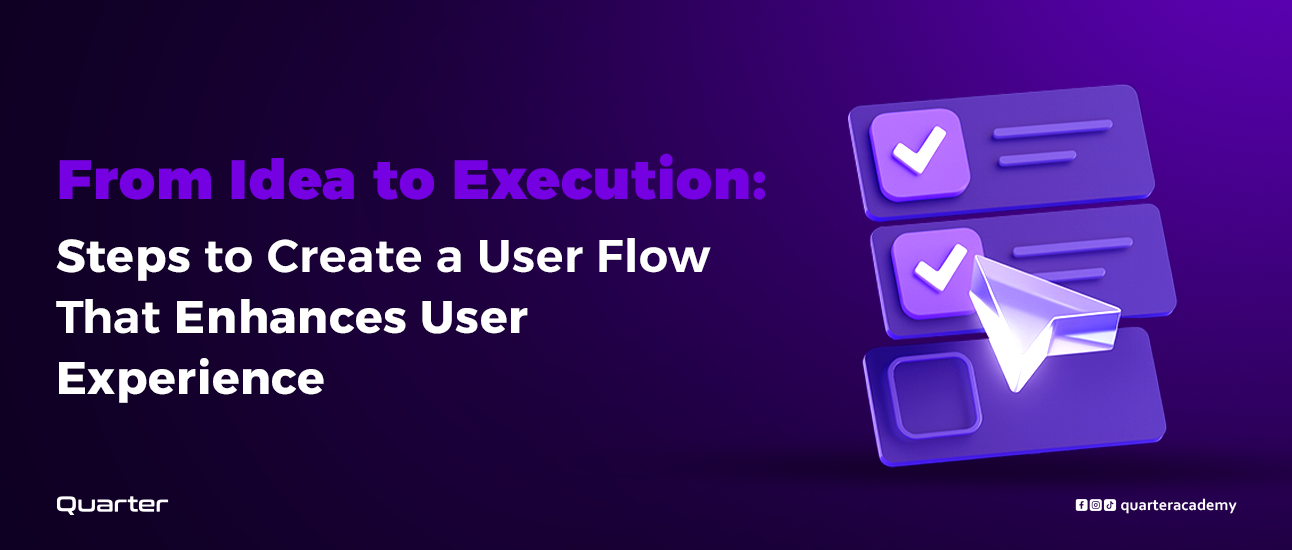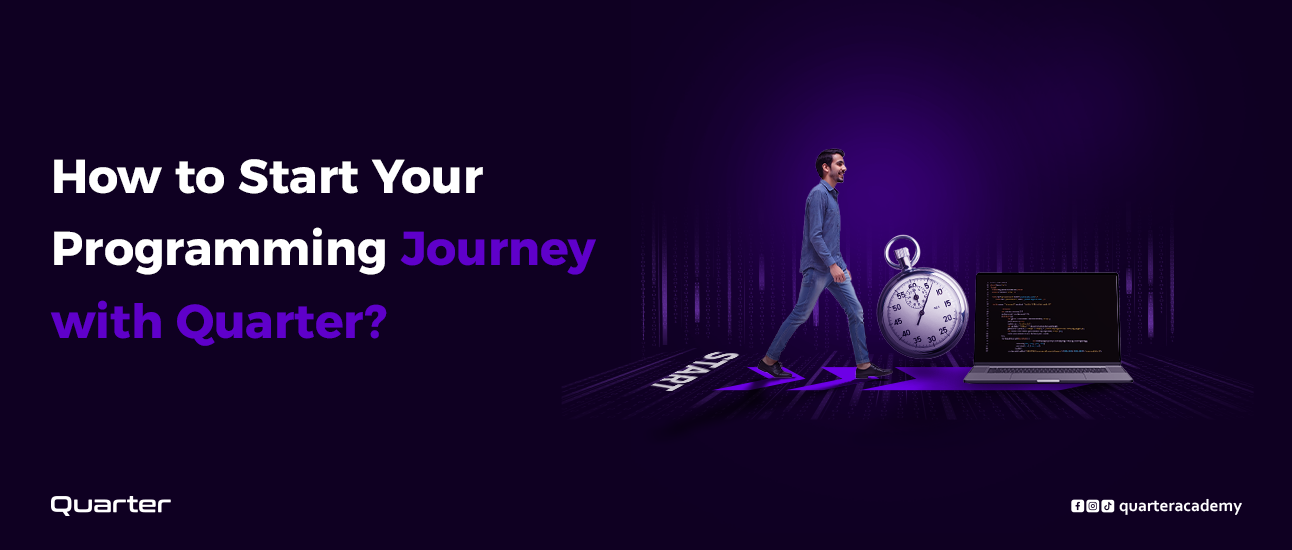From Idea to Implementation: Steps to Create a User Flow that Elevates User Experience Quality

In the world of UI/UX design, it’s not enough to craft a beautiful interface; the priority is to build a clear, frictionless user experience from the very first entry point to goal completion. This is where the steps to create a User Flow come in—a pivotal tool that enables the designer to translate ideas into actionable paths that precisely mirror the user journey.
In this article, we’ll walk step-by-step through the steps to create a User Flow scientifically and methodically to raise experience quality and deliver an effective product.
Why is a User Flow important?
- It maps the path: it shows users how to reach their goal with minimal effort.
- It reduces errors: defining the path early helps you avoid complexities during development.
- It saves time: instead of fixing design mistakes after implementation, you set things right from the start through the steps to create a User Flow.
Steps to Create a User Flow Scientifically
1) Define business and user goals
Before any sketching or planning, ask: What is the core goal of the app or site? What does the user want to accomplish?
This stage is foundational—without it, any User Flow will be incomplete.
2) Collect data and research (User Research)
Don’t start designing based on assumptions. Conduct user interviews, observe behavior, and analyze competitors.
These inputs help you determine the most accurate steps to create a User Flow, grounded in reality rather than guesswork.
3) Identify entry points
Where can the user come from?
- From Google
- From an ad
- From a sign-in screen
- Identifying these points is essential to clearly draw the beginning of the User Flow.
4) Map scenarios
For each user goal, map a full scenario. Example:
Goal: purchase a product
Scenario: search → add to cart → checkout → confirmation
These scenarios later become part of the steps to create a User Flow.
5) Draw the diagram (User Flow Diagram)
Use tools like Figma or Miro to map:
- Screens
- Actions
- Decisions
- Outcomes
- Every arrow or step in the diagram must clearly indicate the next stage.
6) Validate simplicity
One of the most important rules in the steps to create a User Flow: Keep it simple.
If a user needs six taps to reach a goal, reduce them to three. Simplicity = better UX.
7) Test with users (Usability Testing)
Sketch your flow and show it to real users before implementation. You’ll uncover issues you might have missed.
8) Continuous iteration
A User Flow isn’t static; review and refine it based on test results and post-launch behavior.
Tools that help with the steps to create a User Flow
- Figma: ideal for interactive design.
- Miro: great for team collaboration.
- Whimsical: simple and fast for flow diagrams.
Common mistakes when creating a User Flow
- Skipping research and relying on guesswork.
- Overcomplicating paths in a way that exhausts the user.
- Forgetting entry and exit points.
- Not testing the flow with real users.
The success of any digital product begins with understanding the user and building a clear, seamless journey. By following the steps to create a User Flow scientifically, you ensure:
- An integrated user experience
- Fewer late-stage errors
- Faster achievement of project goals
A User Flow isn’t just a diagram—it’s the roadmap that turns your concept into a successful implementation.
Tags
related articles
view all
How to Start Your Programming Journey with Quarter?
Have you ever imagined building an app or website from scratch? Programming is not just about writing code; it’s the language of the modern age, the key to innovation, and the gateway to success in the digital future. Whether you're a student, an employee, or someone seeking a career change, learning programming with Quarter is the best step you can take today. In this article, we’ll explore how to start your programming journey, present 10 reasons to dive into programming, and guide you on becoming a professional programmer in less than a year, along with strategies to improve your skills and essential programming basics.
Why Should You Start Your Programming Journey Now?
The Importance of Programming in the Modern Era
We live in a digital world where technology is integral to every aspect of life. Programming is no longer an optional skill but a necessity for success. It’s like learning a new language that opens doors to new opportunities.
A Promising Career Future
Programmers are the heroes of the digital world. The demand for this skill is increasing daily, whether in large corporations or startups, making programming one of the most stable and lucrative careers.
10 Reasons to Start Learning Programming Now
How to Start Your Programming Journey with Quarter?
How to Become a Professional Programmer in Less Than a Year?
Define the field you want to specialize in, whether it’s app development, web development, or data analysis.
Make programming a part of your daily routine.
Start with small projects and gradually increase their complexity.
Quick Strategies to Improve Programming Skills
Platforms like HackerRank and Codewars offer challenges to enhance your skills.
Analyzing professional developers’ code helps you develop your own style.
Essential Programming Basics You Should Know
Designing efficient algorithms is fundamental for any programmer.
Help organize and utilize data effectively.
Tools to Help You Learn Programming
Tools like Visual Studio Code and PyCharm simplify coding.
How to Choose the Right Programming Language for You?
For data analysis, start with Python. For app development, try Java or Swift.
Common Mistakes When Learning Programming
Programming requires patience and practice.
Programming is not just a technical skill; it’s a bridge to achieving your dreams and ambitions in the tech world. With Quarter, you can confidently begin this journey, supported by advanced curricula and continuous guidance. Start now and become part of a creative programming community! 🚀
FAQs
Yes, with dedication and the right resources, anyone can learn programming.
Python is an ideal choice due to its simplicity and versatility.
It takes 3 to 12 months to become a professional programmer, depending on the effort invested.
Yes, Quarter provides accredited certifications that boost your job prospects.
Start your journey with Quarter today and seize the opportunity! 🚀

How to Study Effectively During Ramadan? Tips to Organize Your Time and Increase Focus
The holy month of Ramadan is a blessed time that provides an opportunity for spiritual and personal growth. However, many students struggle with studying during Ramadan due to changes in daily routines and the effects of fasting on concentration. Despite these challenges, you can take advantage of this month to manage your time efficiently and achieve maximum productivity by following strategic study techniques.
In this article, we will share the best methods to enhance studying during Ramadan, helping you stay focused and make the most of your time without feeling exhausted.
Why is Studying During Ramadan More Challenging?
Many students face difficulties while studying during Ramadan because of:
Change in daily routine: Altered sleep and wake-up schedules may affect concentration.
Fatigue due to fasting: A long period without food and water can lower energy levels.
Religious and family commitments: These may reduce available study time.
However, with proper planning and time management, studying during Ramadan can become more efficient and productive.
Best Tips to Organize Your Time and Increase Focus While Studying During Ramadan
1. Identify Your Peak Concentration Hours
Each person’s energy levels fluctuate throughout the day, so it's important to know when you are most focused. The best times for studying during Ramadan are:
After Suhoor: Your body is energized, and your mind is alert.
After Taraweeh prayers: You will have rested and regained energy.
One or two hours before Iftar: This is a good time for light revision.
2. Create a Flexible Study Schedule
For studying during Ramadan to be effective, set up a flexible study plan that accounts for fasting, prayers, and rest. Try dividing your day as follows:
Before Iftar: Light revision or solving easy exercises.
After Iftar: Studying subjects that require high concentration.
After Taraweeh: Allocating time for memorization or quick reviews.
Use tools like Google Calendar or study planning apps to organize your tasks efficiently.
3. Maintain a Balanced Diet
Nutrition plays a major role in enhancing studying during Ramadan. Consume meals rich in:
Proteins (eggs, chicken, fish) to boost concentration.
Complex carbohydrates (oats, brown rice) for sustained energy.
Nuts and dried fruits to enhance mental activity.
Avoid fatty and fried foods, as they cause sluggishness and affect focus.
4. Minimize Distractions While Studying
One of the biggest obstacles to studying during Ramadan is distractions like smartphones and social media. Here’s how to avoid them:
Switch your phone to airplane mode or use distraction-blocking apps.
Listen to soft instrumental music or nature sounds for better concentration.
Apply the Pomodoro Technique: Study in focused 25-minute sessions, followed by short breaks.
5. Get Enough Sleep
Proper sleep improves concentration and enhances studying during Ramadan. Try to sleep early and wake up for Suhoor to ensure you get enough rest.
Tips for better sleep:
Avoid caffeine-rich drinks before bed.
Sleep in a dark, quiet room.
Practice meditation or deep breathing before sleeping.
6. Engage in Light Physical Activity
You might think exercising while fasting is difficult, but light activities like walking or deep breathing exercises can improve blood circulation to the brain, enhancing studying during Ramadan. It’s best to exercise an hour or two after Iftar to maintain energy levels.
7. Use Prayer and Reflection Time to Refresh Your Mind
Prayer and religious activities can be an excellent way to recharge mentally and improve focus. Take a few minutes after each prayer to reflect on your study goals and refresh your energy.
How to Motivate Yourself to Study During Ramadan?
Staying committed to studying during this holy month can be challenging. Try these motivation techniques:
Reward yourself after completing study sessions with something you enjoy.
Set small daily goals and track your progress.
Change your study environment occasionally to break the monotony.
Study with friends online or review lessons together.
Studying During Ramadan: An Opportunity for Growth and Self-Improvement
Don’t let fasting become an obstacle to your studies. Instead, use it as a chance to develop time management and self-discipline skills. By organizing your time, eating healthy, and identifying your peak focus hours, you can make studying during Ramadan an enriching and productive experience.
Start implementing these tips today and get ready to achieve the best academic results during Ramadan!

5 Tools to Help Beginners in Programming
Programming is a vital skill in today’s digital age. However, as a beginner, you might face challenges that seem overwhelming. Don’t worry! With the right tools and proper guidance, you can become a skilled programmer in no time.
In this article, we’ll discuss 5 tools to help you with programming, the easiest programming language to learn, how to write clean and understandable code, whether coding is worth the effort, and how to solve programming challenges like a pro.
Tools to Help Beginners in Programming
Visual Studio Code (VS Code):
A flexible, free code editor offering an easy-to-use environment. It supports various programming languages and has powerful extensions.
Git & GitHub:
An essential tool for version control and project sharing. It helps you track changes and collaborate on projects with others.
Codecademy:
An interactive learning platform that teaches programming through practical projects.
Postman:
A tool used to test APIs (Application Programming Interfaces) effortlessly.
Stack Overflow:
A community of programmers where you can find answers to any coding challenges you encounter.
What is the Easiest Programming Language to Learn?
For beginners, Python is the best choice. It’s known for its simple syntax and ease of learning, making it perfect for grasping basic programming concepts.
Reasons to Choose Python:
- Easy to learn and understand.
- Versatile for web development, artificial intelligence, and data analysis.
- Supported by a large community offering extensive help and resources.
How to Write Clean and Understandable Code?
Writing clean and understandable code is not just beneficial for you but also makes teamwork more efficient.
Use Clear Variable Names:
Avoid vague names; choose names that reflect the variable's purpose.
Follow Formatting Standards:
Use tools like Prettier to ensure consistent code formatting.
Add Meaningful Comments:
Comments explain the logic behind the code, making it easier to understand later.
Break Code into Small Functions:
Instead of writing long code, break tasks into manageable, small functions.
Is Learning Programming Worth the Effort?
Yes, learning programming is absolutely worth it. Here’s why:
- Job Opportunities: Programmers are in high demand worldwide.
- Improved Thinking Skills: Programming enhances logical thinking and problem-solving abilities.
- Creativity and Innovation: It empowers you to turn your ideas into reality.
Tip: If you’re a beginner, take it step by step and focus on gradual learning.
How to Solve Programming Challenges Like a Pro?
Understand the Problem Thoroughly:
Read the problem carefully before attempting to solve it.
Break the Problem into Parts:
Instead of solving it all at once, divide it into smaller, manageable chunks.
Utilize Available Resources:
Don’t hesitate to search on Google or Stack Overflow for assistance.
Experiment and Refine:
Start with a basic solution and gradually improve it.
FAQs:
1. Can I Learn Programming Without a Technical Background?
Yes, programming is accessible to everyone. Start with a simple language like Python and use interactive resources.
2. How Long Does it Take to Learn Programming?
It depends on how much time you dedicate to practice, but the basics can be learned within 3-6 months.
3. What’s the Best Way to Improve Programming Skills?
Daily practice, working on small projects, and participating in programming challenges.
Programming is not just a skill; it’s an investment in your future. By using the right tools and following the tips mentioned above, you can enhance your programming skills and achieve your dreams in the tech field. Start now and become a professional programmer!
Courses
Subscribe
make the right move for your future.
Powered By
© 2025 Quarter. All Rights Reserved